by Ana Paula Biazon Rocha
IATEFL PronSIG offers a wide range of opportunities for teachers to develop their pronunciation teaching skills. These include this blog, our webinars, conferences and events, our journal Speak Out!, our social media channels and more. Our aim is to raise awareness of the key role of pronunciation instruction and to support teachers with practical tools and resources to integrate pronunciation into their lessons with greater confidence and effectiveness. On our YouTube channel, you will find thirty-four recordings of webinars from the past decade, covering a variety of topics and featuring diverse speakers. In this post, we will revisit some of these highlights to support your continued professional development in pronunciation teaching.
1. Getting started with Marnie Reed, Tamara Jones and Judy Gilbert
Two essential webinars that you should not miss on our YouTube channel were led by pronunciation instruction experts Marnie Reed, Tamara Jones and Judy Gilbert. In their session, The Melody of English: Research and Resources for Teaching the Pragmatics Functions of Intonation, Reed and Jones examined students’ difficulties in understanding the overall message and the intended meaning conveyed through intonation patterns, such as rising or falling tones, even when they can recognise individual words and sounds. In other words, learners may successfully decode the language at the word and sound level, but still struggle to interpret the meaning behind how something is said. Among the several suggestions of activities for the classroom, Jones mentioned how we can have students feel stress and rhythm using their bodies, as discussed in our very first blog post. You might also be interested in Reed and Jones’ book, Listening in the Classroom: Teaching Students How to Listen (2021, TESOL Press).
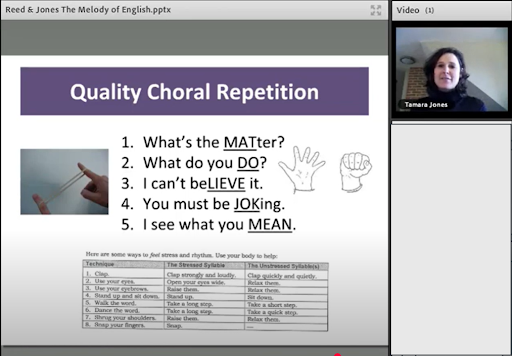
Judy Gilbert’s webinar, Teaching Pronunciation: Simplicity is the key, focused on what prosody (melody and rhythm) is and why it is important. According to her, prosody is the framework of the whole pronunciation system of English. She discussed her iconic Prosody Pyramid, which illustrates how elements such as thought groups, focus stress, stressed syllables and peak vowels contribute to the melodic structure of the language, and how we can approach that with students in the classroom. With ideas and activities from her classic book series, Clear Speech, it is simply delightful to watch Gilbert in action. My favourite parts of her session are when she uses a kazoo to have learners practise how to identify stress. You can’t miss it!
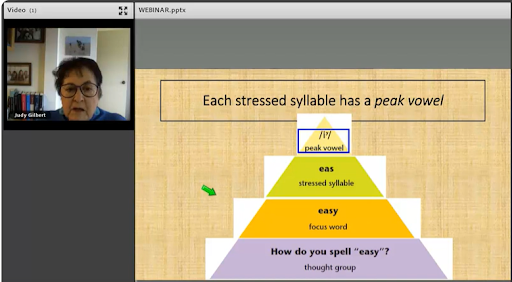
Other webinars which also discuss prosody include Joy Mill’s Prosody for all the skills: How to integrate the “music” of language into any lesson, and Dan Frost’s Putting prosody first in ELT.
2. Ask the Experts: Mark Hancock and Lucy Pickering
Among the webinar recordings, you will find two ‘Ask the Expert’ sessions, where pronunciation experts Mark Hancok and Lucy Pickering answered participants’ questions. Hancock discussed the four key dimensions of pronunciation, namely mind, muscle, meaning and memory, while Pickering reinforced that ‘intonation is learnable and teachable’. You can also check our previous blog posts about Hancock’s session and Pickering’s session.
3. Teaching Pronunciation to Young Learners
Perhaps one of the most valuable things we, as teachers, can do to ensure pronunciation is foundational to our teaching is to raise learners’ awareness from the very beginning, and nothing demonstrates this more powerfully than teaching pronunciation to young learners. Fortunately, two webinars on our YouTube channel lead the way into such a fascinating world: Sylvie Doláková’s Pronunciation tips & tricks for teachers of young learners and Viktor Carrasquero’s Fostering phonological awareness in Early Years. Doláková, an expert in the area, shared numerous creative ideas and activities to engage young learners in pronunciation. One of the most noticeable aspects of her webinar is that many of these ideas can be easily adapted for teenagers and adults because creativity in pronunciation instruction should not be limited by age!
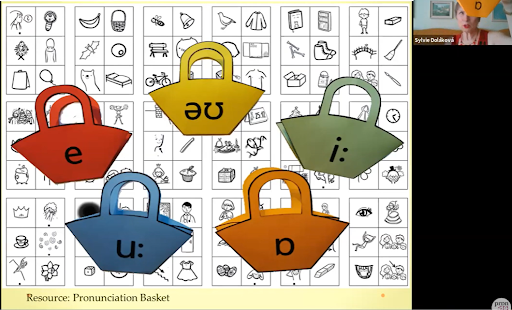
Former PronSIG joint blogger, Carrasquero reported on the development of an online pronunciation course for three- to five-year-old learners in Hong Kong. In this context, phonological awareness plays a crucial role in supporting these young learners because it lays the foundation for their ability to recognise and manipulate sounds, which is essential for developing both accurate pronunciation and early literacy skills. You can also check our previous blog post about Carrasquero’s webinar.
4. Choose your topic!
As mentioned before, the variety of topics covered in our webinars can help you enhance your pronunciation teaching practice, gain fresh ideas and address the diverse needs of your learners more effectively. Some recommendations include:
- Intelligi…. Sorry, what did you say? with Robin Walker
- How does your mother tongue impact on L2 learning with Thaïs Cristófaro Silva (you can also check our previous blog post about this session)
- Haptic Pronunciation teaching: Neuroscience, Praxis and Touch with William Acton, Amanda Baker and Michael Burri
- What pronunciation teachers can learn from international teaching assistants with Vijay Ramjattan
Last but not least, you might also want to check a webinar I presented, Are we pronunciation ignorers, entertainers, enthusiasts, and/or teachers?, discussing different profiles of teachers and their relationship with pronunciation teaching. 🙂
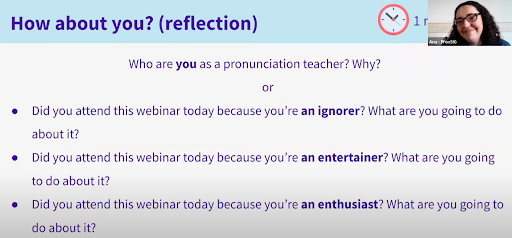
Now it is up to you! Take your time and give yourself a chance to explore our YouTube channel as you wish.
Since 2024, PronSIG webinars, as well as those from other SIGs (Special Interest Groups), have been made available exclusively to PronSIG members on the IATEFL website. If you want to catch up with any of them, why don’t you become a PronSIG member?
For more discussions, ideas and tips on how to teach pronunciation, please check previous posts here. Don’t forget to leave your comments below and follow PronSIG on social media.
P.S.: A big thanks to my fellow PronSIG committee member, Beata Walesiak, for suggesting this blog post. I loved it!
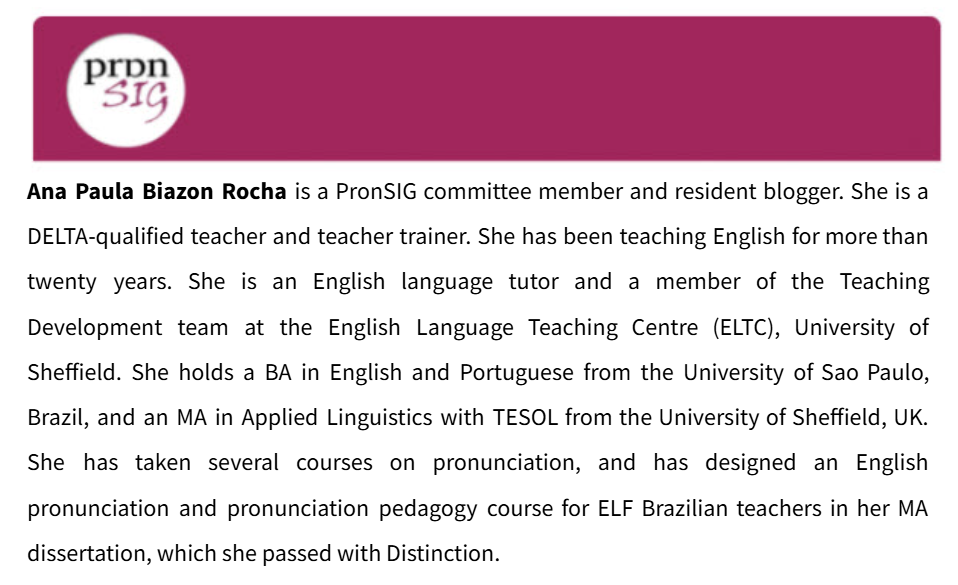


The pleasure is all mine, Ana!